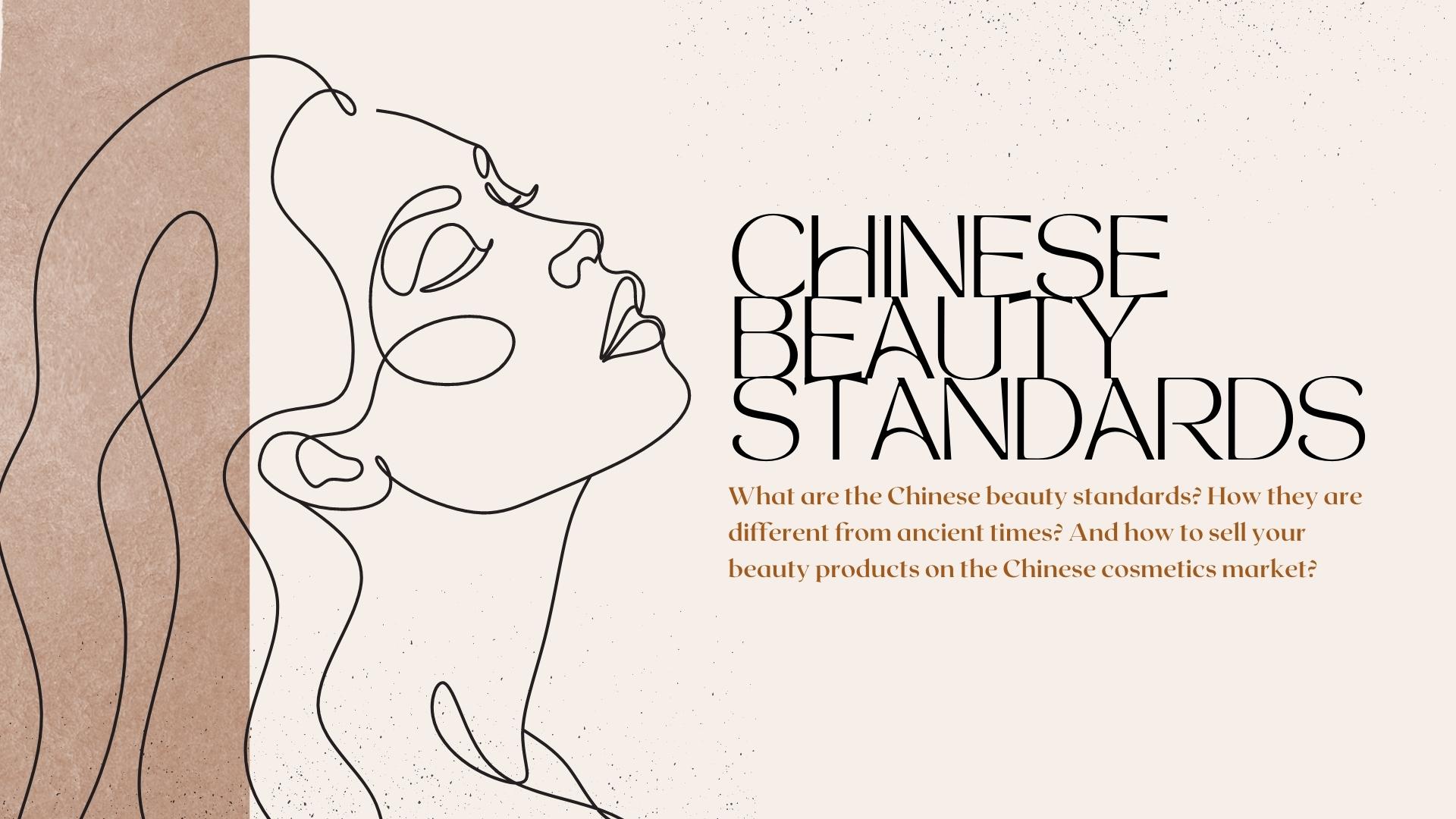In China appearance is very important and people, especially Chinese girls, feel a strong pressure from society to look perfect all the time. There are a lot of beauty standards that all women in China consider the most beautiful and they are putting pressure on themselves to match those standards.
Chinese beauty standards are different from those in the West. For one, pale skin is prized above all else, and women go to great lengths to maintain a porcelain complexion. Thick eyelashes, eyebrows, and full lips are also considered attractive features, as is a small nose or a thin body shape. Some of these beauty standards were present in Chinese culture for centuries, but with the globalisation and westernization of Chinese society, there are a lot of new beauty standards gaining popularity among Chinese girls.
As the Chinese beauty standards have an impact on the shopping behaviours of most Chinese women, it’s important to understand what is the beauty ideal of an Asian woman before entering the cosmetics market in China. In this blog post, we’ll take a look at some of the most popular Chinese beauty norms and explore their history and cultural significance. Stay tuned!
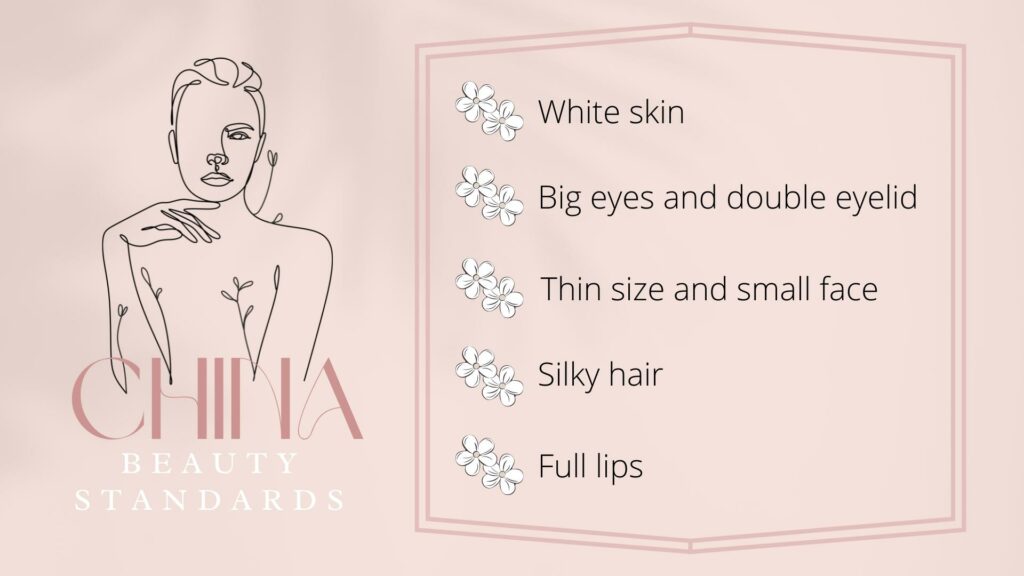
The History of Beauty Standards in China
Although nowadays, in the age of globalisation, perceptions of beauty in different cultural circles are becoming more and more similar. In the past, standards differed more markedly.
Chinese Beauty Standards in the ancient times
A description of the standards of beauty in Chinese culture can be found in the traditional literary and philosophical texts of Confucianism and Taoism. Here is the description of the ideal Chinese beauty found in “The Secret of Crystal Chambers” (玉房秘诀 Yùfáng mìjué) from the Six Dynasties period (222-589y.);
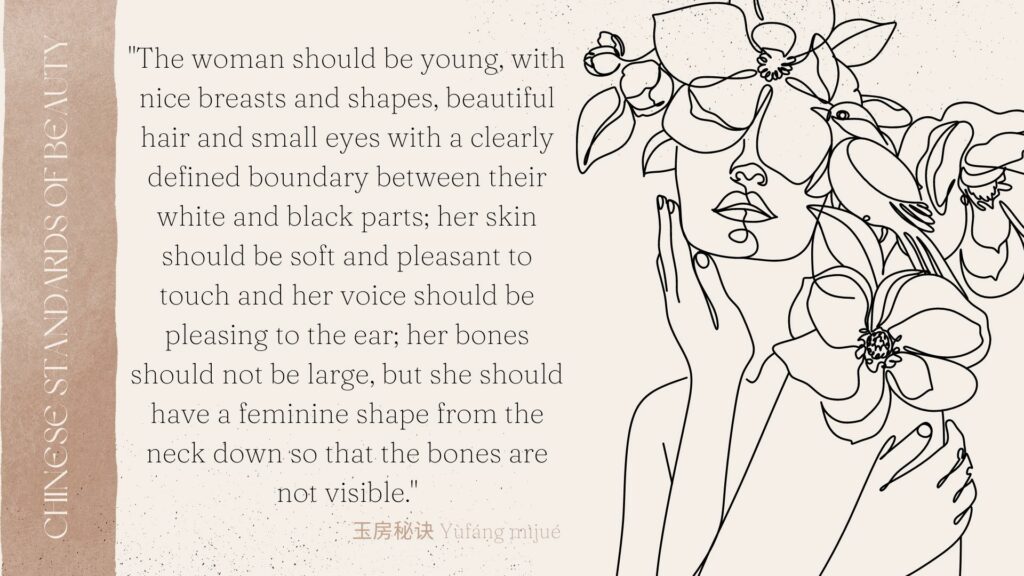
In contrast to Western culture, where the female figure, round breasts and long shapely legs have always been admired, in China, the face and its unique features have always been placed in the main field of interest. In traditional China, the round face was considered the most beautiful, as it is a symbol of fullness and perfection, as are large, round eyes.
Second in importance after the eyes were the eyebrows, which were already painted in ancient times. Narrow and long eyebrows were most desirable, and these appear in numerous paintings from the most ancient times. For the face to be considered perfect, the whole should be complemented by fine, red lips emphasising the white teeth.
Compared to other aspects little described in the literature, fair, smooth skin appears very common. The love of a fair complexion most likely began in BC. Women used white powder as early as the reign of King Wen (1100 BC) and at the court of the first emperor of China (259-210 BC).


The hurtful tradition of foot-binding
It is impossible to talk about Chinese beauty standards without touching on the subject of foot binding, controversial around the world until today. It is said that this controversial tradition started in the 10th century and was carried on up until the XX century. This product of cruelty, female tears and suffering was admired and worshipped by men, becoming the most erotic part of the female body.
Over time, such feet became the only condition for taking a woman as a wife. It was a symbol of a woman’s suffering and submissive nature towards a man and proved that she would be an obedient, faithful and loyal wife.
Chinese Beauty Standards in 2022
Perceptions of female beauty began to change in the 20th century and are changing until today. Asian and Western models started to appear in commercials and on television, pressuring young Chinese girls to pursue slim waists and unreal body shape.
Nowadays, the beauty standards in China are more and more influenced by Western beauty standards, creating an interesting cultural mix. The main Chinese beauty standards are; pale skin tone, a slim face, called ‘goose egg face’ which is an oval-shaped face with a very thin chin, big eyes, preferably with double fold eyelids, full, delicate lips and silky, strong hair.
The Ideal of Female Beauty in China: Pale Skin
When it comes to Chinese beauty standards, there is nothing more Asian than the pursuit of white skin. This Chinese beauty standard was already practised in ancient China and has never changed since then. As tanned skin was reserved for poor women that needed to work in the field all day, fair skin was always a symbol of high social status. The less the woman needed to stay outside in the sun and work, the fairer skin she had. And as those more wealthy women had more money to take care of their looks, they represented the Chinese ideals for a beautiful woman.
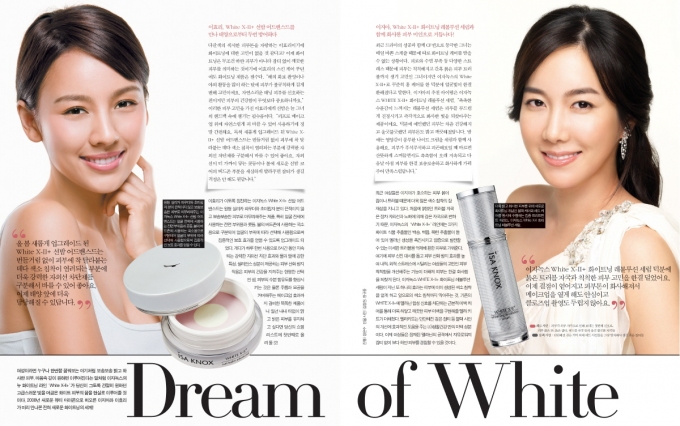
While in the West, Coco Chanel reversed the trend by making tanned complexion fashion (saying that being tanned means to be rich enough to have time to tan) and rich people started to go on holidays and sunbathe there, western beauty standards regarding skin tone changed. But nothing like this happened in China, and white skin is still considered the most beautiful of all beauty ideals. There is a common Chinese saying; 白富美 bái fù měi, which means; white, rich and beautiful and is a way to describe the ideal Chinese woman.
The huge market for whitening cosmetic products for pale skin
Because of the importance put on the pursuit of white skin among Chinese people, China’s whitening products market is the biggest in the world. When it comes to cosmetics, all cosmetics that can be used on the skin come with a whitening option, as Chinese netizens are obsessed with having the perfect white skin that their favourite Chinese actress or K-pop singer has. As many girls in the West use bronzers to look as tanned as Shakira or Kim Kardashian, Chinese girls do the same with whitening products.
All the big brands are adapting to this beauty standard, adapting their beauty products to the Chinese market. Don’t be surprised to see whitening foundations, powders, day creams, moisturizers and many more. To be honest, it’s harder to find something not whitening while shopping!
The growing market for hard sun protection
Apart from whitening their skins with all kinds of cosmetics and beauty products, to meet the Chinese beauty standards and protect their white skin from harmful UV light, Chinese people use a lot of skin-covering clothes and accessories. It’s not uncommon to see people covered in long sleeves, and long trousers, and holding an umbrella on a hot, sunny day.
This trend is rising, with more and more companies that produce protective clothes and accessories joining the market. And it’s not a surprise that facekinis, which are a type of full face mask that people wear on the beach were a trend a few years ago.
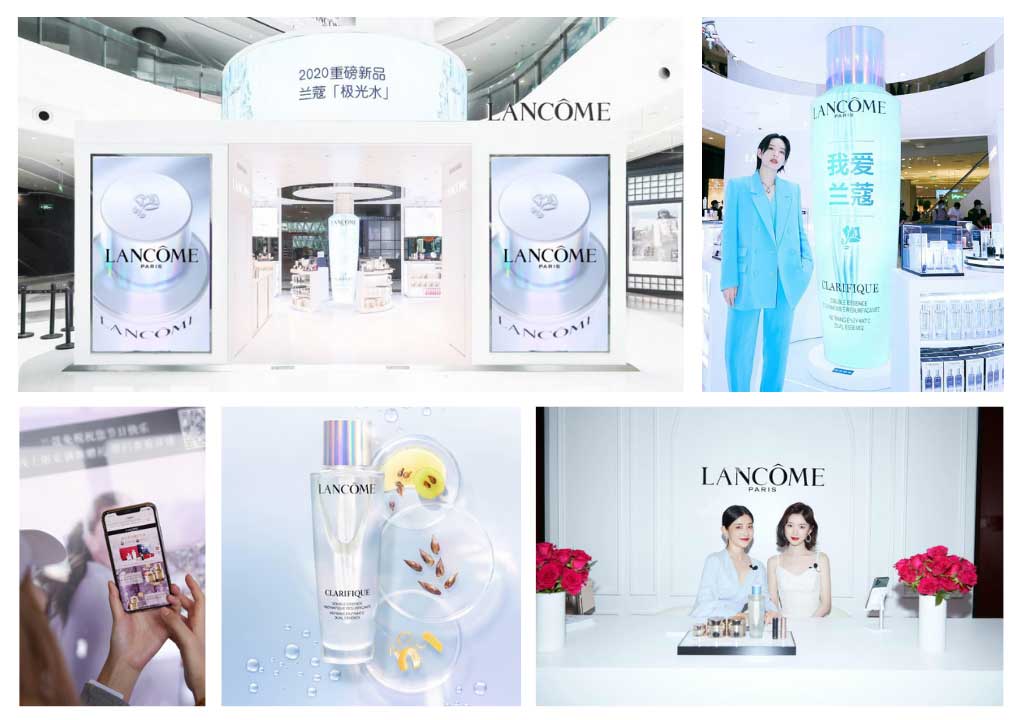
Big eyes and double eyelids are considered prettier
Some Chinese naturally have eyes that can be similar to that of Westerners, with a “fold” above the eyelid (so-called double fold eyelid). But most have rather slim eyes, with single-fold eyelids, which makes them look smaller, and are considered uglier by Chinese standards. This is one of these Chinese beauty standards that come from the West and Western media.
This is why many Chinese women put a lot of effort into makeup on their eyes to make them look bigger according to Western standards. Some will go as far as wearing lenses and stick a sticker on their eyelids to give the illusion of this ” double fold eyelid”. The most radical practice is of course double eyelid plastic surgery. It is also one of the most practised operations in China.
What is interesting is that when it comes to our perception of beauty, we tend to like more Chinese models that have narrow, ‘small’ eyes with single fold eyelids. It’s natural, because this type of look is more ‘oriental’ to the Westerners, and therefore considered more attractive. But when it comes to Chinese beauty ideals, those models are considered ugly and are not favoured among Chinese netizens.
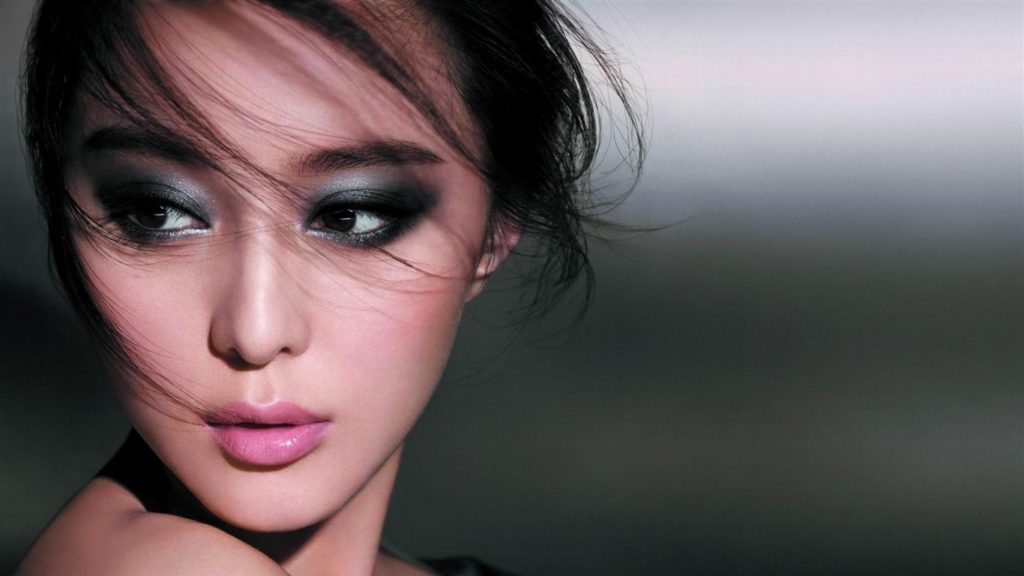
The Importance of Thin Size and Slim Body Shape
Like in many other countries, a thin waist is considered a major beauty criterion in China. Chinese people are by nature finer than Europeans, Americans or Africans. Slender, petite women were more appealing to Chinese society. Many classical poems mention 柳腰 liǔyāo ‘willowy waist’ women, implying a preference for a slim, narrow waist, so as you can see, this Chinese beauty standard is also one of the oldest ones. As we tend to like slim women that have curves, like big boobs or round bottoms, in China, the thinner the Chinese woman is the better.
Nowadays, with busy lives and more fast foods available on every corner, Chinese people are starting to have a problem with obesity. Because of that, every Chinese girl starts to worry about her weight, which leads to a growth in the weight control supplements market and eating disorders. What is also not helping is that Chinese women have a rather slim and girly body type, so every girl that doesn’t fit this body shape is not considered beautiful according to Chinese beauty standards.
Many “challenges” to prove his thinness was very popular on Chinese social networks. For example, girls had to place a sheet of A4 paper in front of their bellies. The message was simple: if your size exceeds the sides of the sheet, you are considered “fat”. Millions of Chinese women enjoyed sharing their wasp waist camouflaged behind a simple sheet on social networks to prove their silhouette was considered “perfect”.
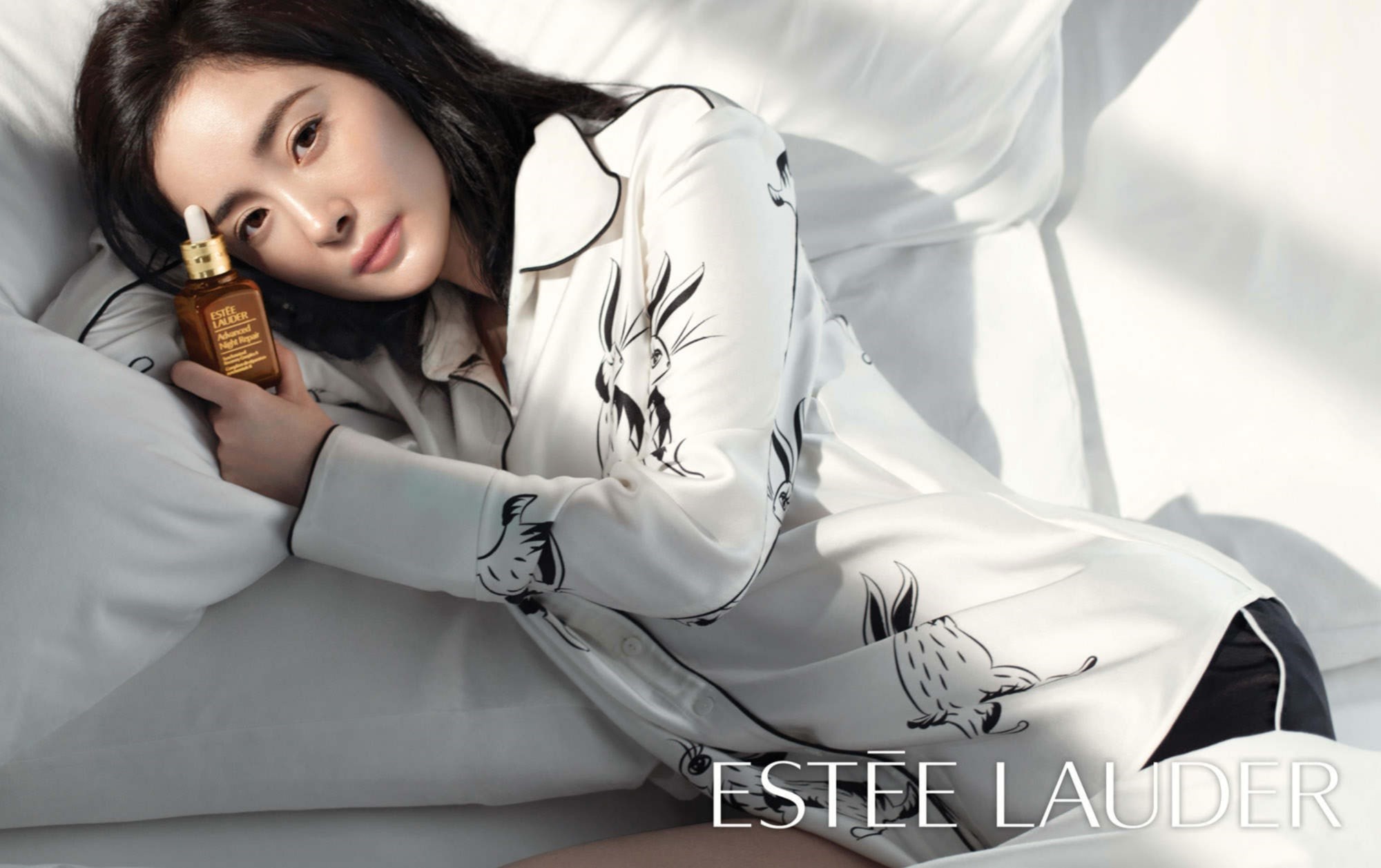
Melon Seed Face or Goose Egg Face? Which one fits the Chinese Beauty Standards?
Although there are some face shapes favoured in the West, we don’t put much thought into that and all shapes are widely accepted. In China, the face shape is also important and some are perceived as more beautiful than others. The importance of face shape comes from ancient times when face reading was commonly practised in China.
In the Chinese language, there are a lot of different sayings describing the face shape that is used by the Chinese. In the West, it’s enough to say that someone has an oval, long, triangle or square face. In China, you can find names like;
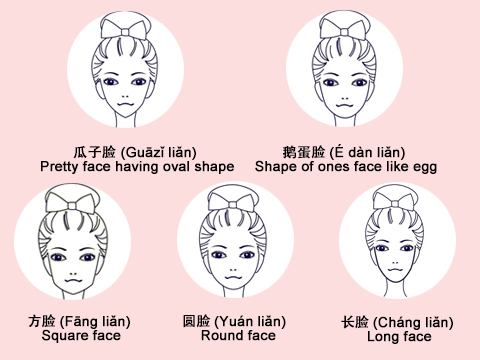
- 瓜子脸 guāzǐliǎn – melon seed face
- 鹅蛋脸 é’dànliǎn – goose egg face
- 国字脸 guózìliǎn – square face
- 长脸 cháng liǎn – long face
- 圆脸 /包子脸 yuán liǎn/bāozi liǎn – round face
Out of all these face shapes, the melon seed face and goose egg face are the most favoured by every Chinese woman, as both of them are rather thin, small, delicate and with a narrow chin. A square face shape is considered ugly, and as a lot of Asian girls have relatively round or square jaws, it’s something that makes them very ashamed. Every woman in China is yearning for an oval face and some go as far as to go through plastic surgeries, that help them achieve a rather oval face with a pointy chin.
They will tend to hide their square jaws behind their long hair and give their face a finer appearance. Before posting a selfie, they will also use apps to beautify the picture. These apps are so developed that they can even refine the shape of their face. A step they never miss in the editing of their selfies! There are also some tools that they will roll on their jaw to refine it and have a V-shaped face. But it takes a lot of time and the effectiveness is almost not visible.
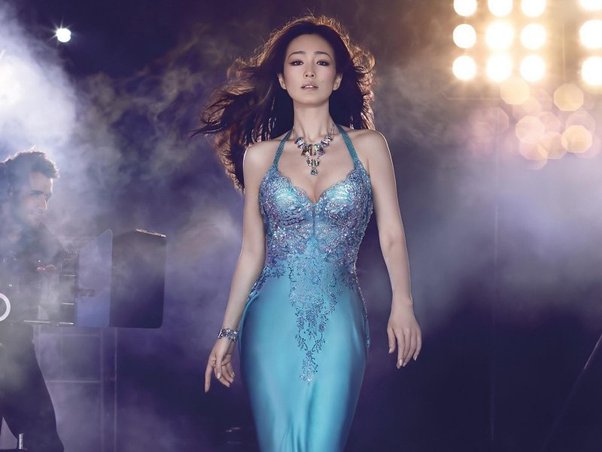
In the photo above you can see Gong Li, a famous Chinese actress that was once awarded “The World’s most beautiful Oriental woman”. With white skin, a tall nose bridge, big eyes and a slim waist, she’s a beauty ideal according to Chinese beauty standards. One of the main features of her appearance that every Chinese woman is jealous of is her goose egg face shape.
Silky Hair – a Feature Hard to Maintain in Today’s China
The cosmetics market for hair continues to grow in China. Although Chinese people have rather strong, thick and silky hair, keeping them in good condition with high pollution and bad quality of water in China is not an easy task. Some Chinese are also experimenting with dying their hair, as we do in the West, but in general, the Chinese type of hair is considered pretty.
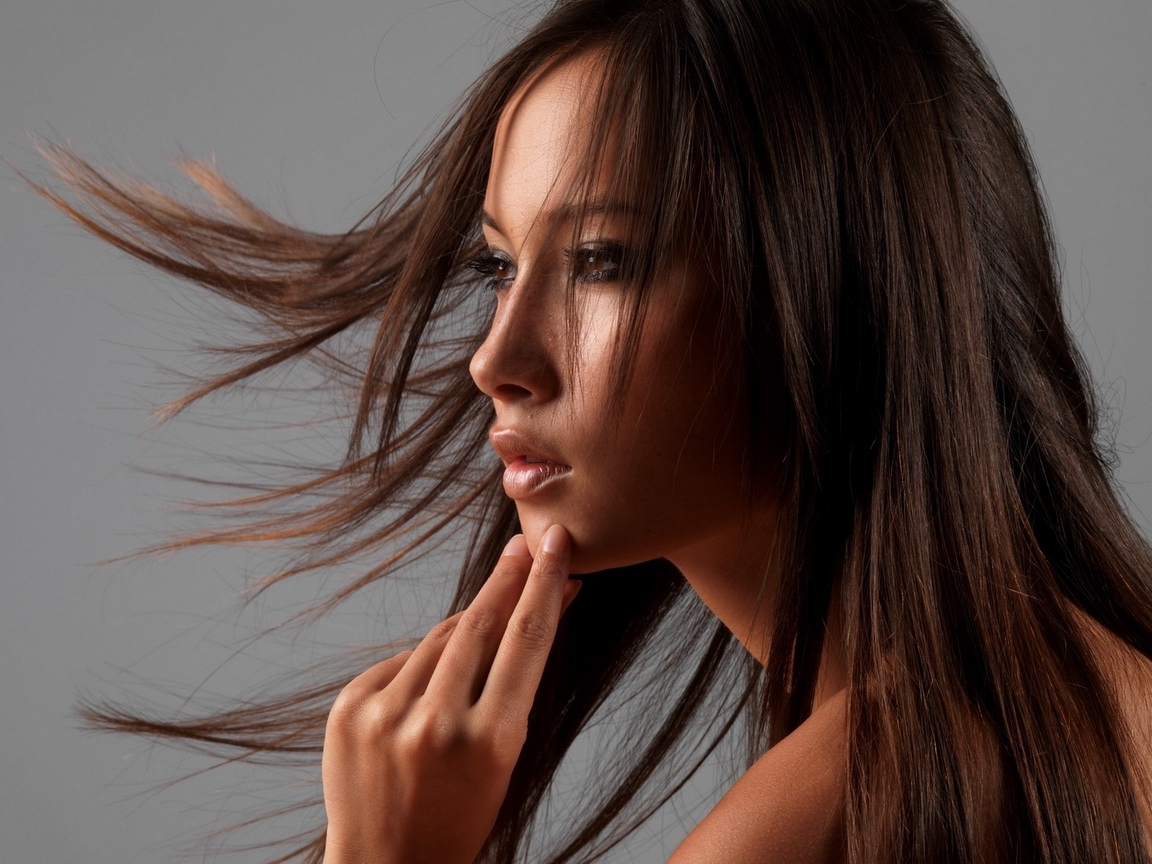
Full lips are a must for Chinese women
Although in the past Chinese preferred to have rather small and delicate lips, nowadays, with the westernisation of society, full lips conclude the Chinese beauty standards. And, just like with small and narrow eyes, most Chinese women have lips that are the opposite of what they find attractive. A typical Chinese girl has rather small lips, that’s why since ancient times they were always highlighting them with a strong red lipstick.
The lipstick market in China is one of the very lucrative sectors and some women that are not satisfied with how their lips look will go for cosmetic surgery that will enlarge their lips, just like we do in the West.
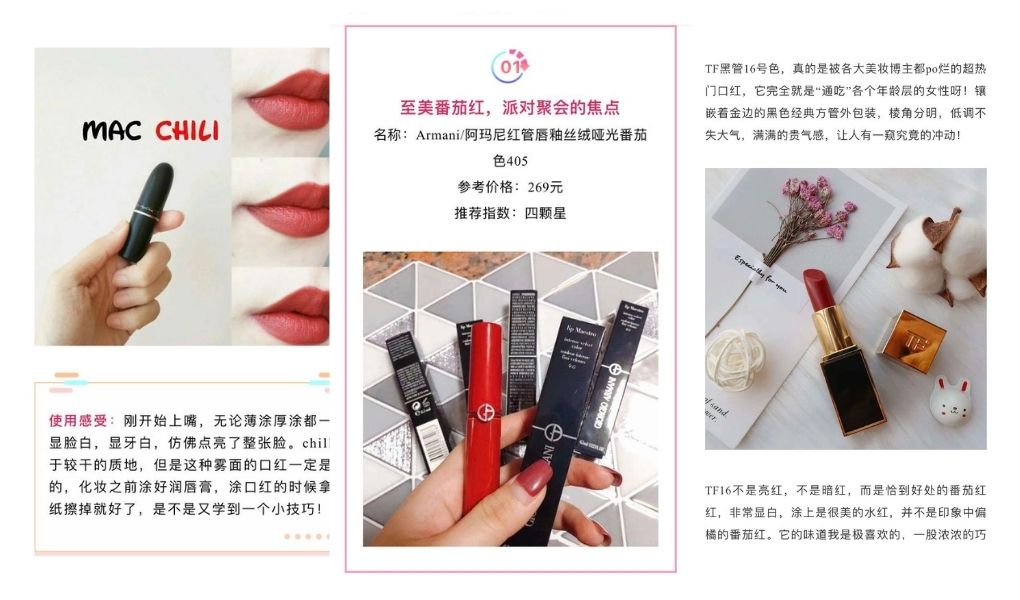
Beauty Standards for Men
Chinese men are considered most attractive when they have light skin and delicate facial features. Although there is not as much pressure when it comes to white skin as there is on Chinese women, Chinese men also use whitening products in their daily self-care routine.
What is different from the West is the body shape and posture preferred in China. In the West, very masculine and manly men are considered the most attractive, while in Chinese society it’s the opposite. There is a preference for slim and delicate, feminine-looking men. Additionally, makeup is not considered weird on men and they use makeup fair more than guys in the West.
The equivalent of the ideal of Chinese beauty standards for women, ‘white, rich and beautiful’ is 高富帅 gāo fù shuài, which means ‘tall, rich and handsome’. And, like in the West, tall men are considered more attractive.
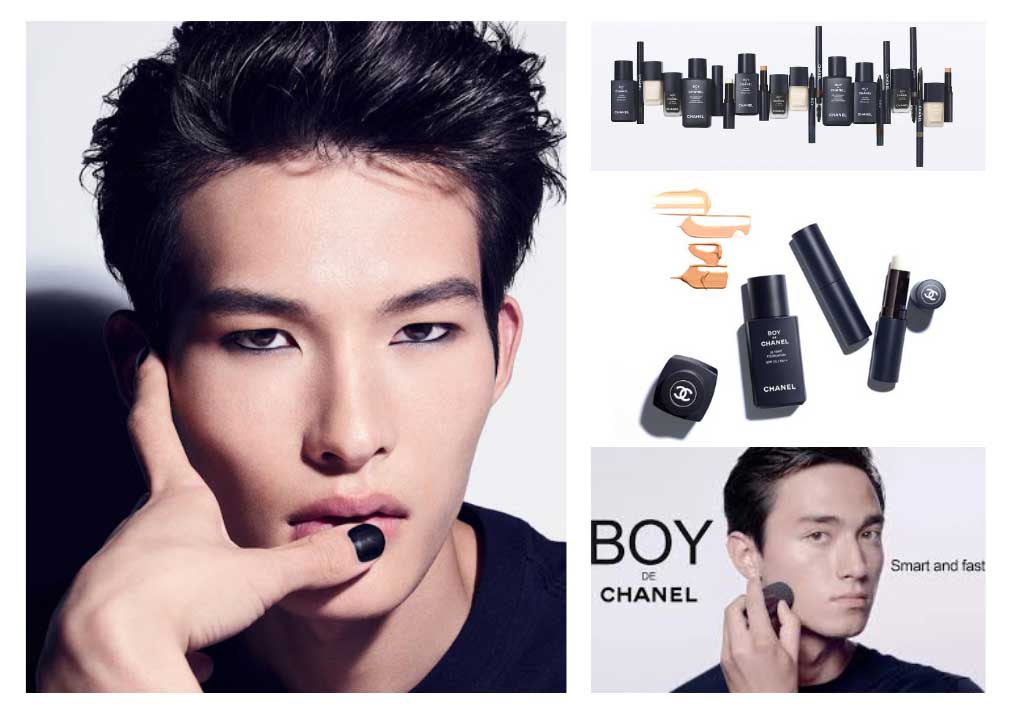
There is also less pressure on having double eyelids when it comes to men and therefore fewer men do plastic surgeries on their eyes. And the situation is similar when it comes to face shape, as strong, square faces are seen as attractive.
Generally speaking, Chinese men are not as highly prized for their looks as Chinese women are, but there are certainly exceptions. Many wealthy and powerful Chinese businessmen command a great deal of respect and admiration due to their good looks.
How do new Chinese Beauty Standards emerge?
Many Chinese beauty standards are present in the lives of the Chinese people for centuries, but some trends are quite new. There are many reasons for that, like the increasing availability of international media and fashion resources, the growing influence of social media, and the rising disposable income of Chinese consumers.
Over the past few decades, China has undergone a period of radical economic transformation. With more people moving into cities and having higher disposable incomes, they are increasingly exposed to global trends in fashion and beauty. Social media platforms like Weibo and WeChat have also played a big role in disseminating these trends. As a result, we’re seeing more and more Chinese women experimenting with new styles and looks.
When it comes to trends and challenges popular in Chinese social media, they were centred around women showing how thin they are. Let’s take a look at some of the online ‘challenges’ and trends that contribute to the emergence of new Chinese beauty standards;
Balancing Stacks of Coins on the Collarbone
One of the hot trends in Chinese social media was to collect balancing stacks of coins standing on the collarbones. The more coins a girl was able to stack, the thinner she perceived to be. Although it’s hard to see the reasoning behind this challenge, as it’s proving the balance skills rather than the figure, it was one of the hot trends in last years.
Belly Button Challenge
Well, this is one of the weirdest challenges that China has seen in recent years. Participants were asked to reach their belly button by wrapping one arm around themselves around their waist- a challenge meant to prove a slim figure. But again, it’s proof of flexibility rather than a slim figure.
There are many more challenges that are supposed to prove the thinness of a woman on the Chinese social media platforms, like wrapping 100 yuan around the wrist, or checking how thin your legs are with the use of an iPhone.



These challenges help to form new Chinese beauty standards, but they also promote unrealistic ideals of beauty, that are harmful to young girls. Sounds familiar? It’s the same as we do in the West, what differs is only the challenges.
Why do so many Chinese Women turn to plastic surgeries to feel beautiful?
Few years back, to match the Chinese beauty standards, women were travelling to South Korea, as it was seen as a plastic surgery capital in Asia. Today there is no need for that anymore, as China became the second market of plastic surgery in the world, right after the US.
The plastic surgery market in China is growing rapidly. By 2023, China is expected to have a market for cosmetic surgeries that tops $46 billion. This means there are more than 25 million people seeking out treatments. This growth is fueled by rising incomes and increased awareness of plastic surgery procedures.
A number of factors are driving demand for plastic surgery in China, including the desire for a more Western appearance, the need to correct deformities, and the growing popularity of cosmetic procedures among men. While there are some concerns about quality and safety, Chinese consumers are increasingly turning to plastic surgery as a way to improve their lives.
The most common cosmetic surgery include double eyelids surgery, enlargening lips, changing the face shape (for example, making the cheekbones higher to smoothering the face) and so on. What is more and more common are men turning to cosmetic surgeries such as having breast implants done to look bigger.
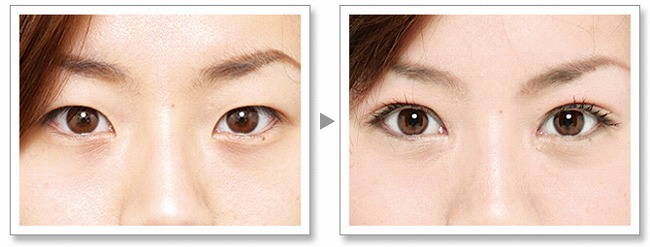
Guide to promoting and selling your cosmetics in China
There is potential for great success in the cosmetics industry in China, but you must understand the market and how to promote and sell your products correctly. Apart from learning about Chinese beauty standards and how to adapt your products to the Chinese market, there are some steps that foreign companies should take to succeed in this lucrative market.
Start your Chinese Website and rank high on Baidu
As the competition on the Chinese cosmetics market is already high, not having a Chinese website that will rank in Baidu, the biggest Chinese search engine, is a shot in the knee. Having a website hosted in China and localised for the Chinese speakers gives you credibility and helps customers trust you. Whoever hears about you or your products and will be willing to give them a try, will first look your brand up in Baidu, to check your products, information about your company and so on.
Although nowadays Chinese people rely on Chinese social media and marketplaces, website is still very important in building credibility and gaining visibility through Baidu SEO. And remember that your website must be adapted for mobile devices, as most of the Chinese people search the Internet on their phones.
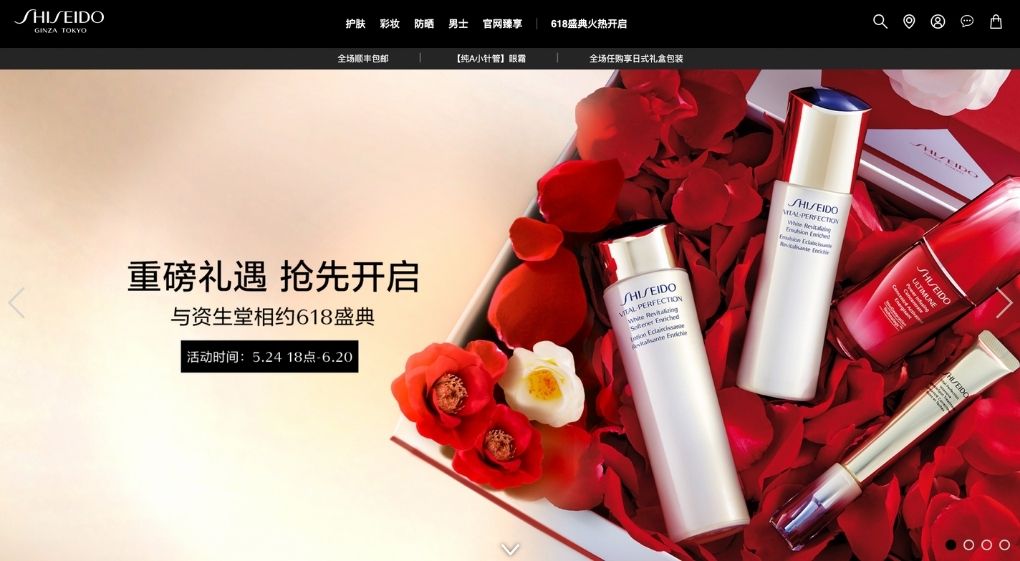
Find the right distributors
Finding the right distributors is an important step for brands, that want to sell on bigger scale. If you want to enter supermarkets and grocery stores, or luxury beauty shops in bigger cities, right distributors will help you, but it’s not an easy task to find them.
There are a few things to consider when looking for distributors for your cosmetics line in China. First, you’ll want to make sure that you’re working with a reputable company that has a good track record in the industry. You’ll also need to be aware of the cultural differences between China and other countries, and make sure that your distribution partner is familiar with the Chinese market. Finally, you’ll need to be prepared to invest significant time and resources into building relationships with potential distributors and overcoming the cultural barriers.
Sell your products on Chinese Marketplaces
There are a number of reasons why selling your products on Chinese marketplaces can be a great business move. For one, Chinese marketplaces are some of the largest and most popular in the world. This means that there is a huge potential customer base for your products. Additionally, selling on Chinese marketplaces can help you to reach a global audience and expand your brand recognition.
Most of the Chinese people shopping online, do it on Chinese marketplaces, like Tmall, JD.com, Kaola, Pinduoduo and many more. It’s the easiest way to reach out to Chinese customers online and it’s also a great way of building brand awareness and good e-reputation of your brand.
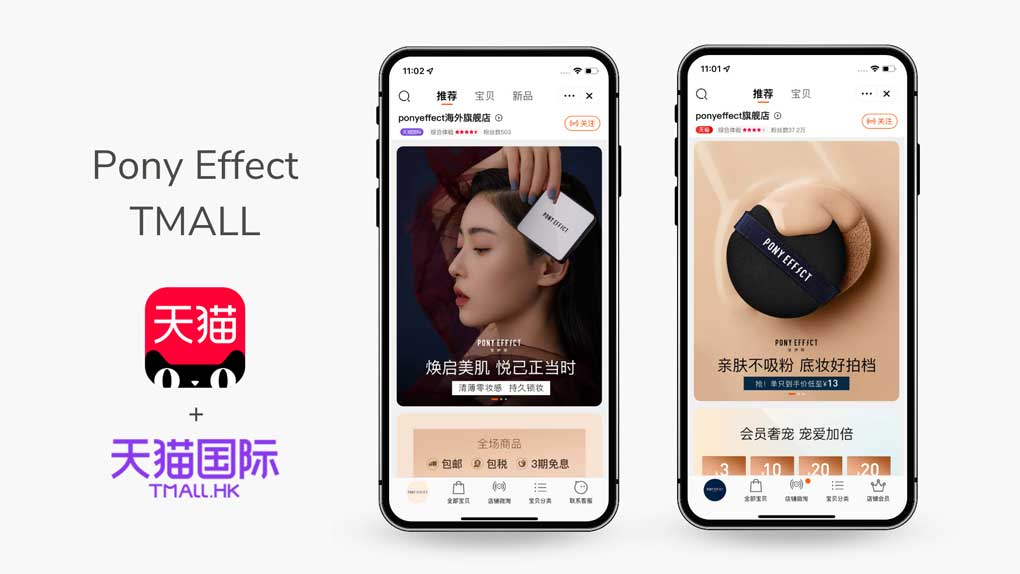
Build Brand Awareness through Chinese Social Media
When it comes to selling products in China, especially from fashion and beauty sectors, being present on Chinese social media is a must. Apps like Wechat, with the possibility to create a WeChat Official Account that works like a mini-website, WeChat store and brochures for your audience, or Weibo, to post longer texts are all great ways to boost your brands’ visibility on the Chinese market.

When it comes to cosmetics in particular, one of the greatest apps to be on is Little Red Book, which is something comparable to our Instagram with a mix of Pinterest features and a build-in marketplace. This app is widely used by Chinese netizens, mostly women, that share their opinions and recommendations of products with the community. There is also a lot of Chinese beauty standards posts and ideas, makeup tutorials and many more.
Leverage Chinese Influencers
Nowadays it’s hard to build a successful marketing strategy for a cosmetics brand without the help of Chinese influencers. They are one of the biggest powers in the Chinese online landscape and they have a big influence on the shopping decisions of their followers.
There are two types of influencers to work with; KOLs and KOCs. KOLs are Key Opinion Leaders and they usually are very popular, with millions of followers. Although they can bring you a big audience, since they have a huge influential power, it doesn’t always mean they will work the best with your brand, and they sure cost a lot.
The other type, KOCs, which are Key Opinion Consumers, are people with a smaller, but very engaged following base. They are everyday users of the products they recommend so the trust level between them and their fans is high. They engage with their followers and are great in convincing people to buy products, as they also use them. And they don’t cost as much as celebrities and big influencers.
KOLs and KOCs can promote your products on their accounts on Little Red Book, Douyin, Wechat, Weibo and many more. They can post photos, videos with your products, they can do livestreaming session where they will talk about your products, they can help you with follow up comments and more.
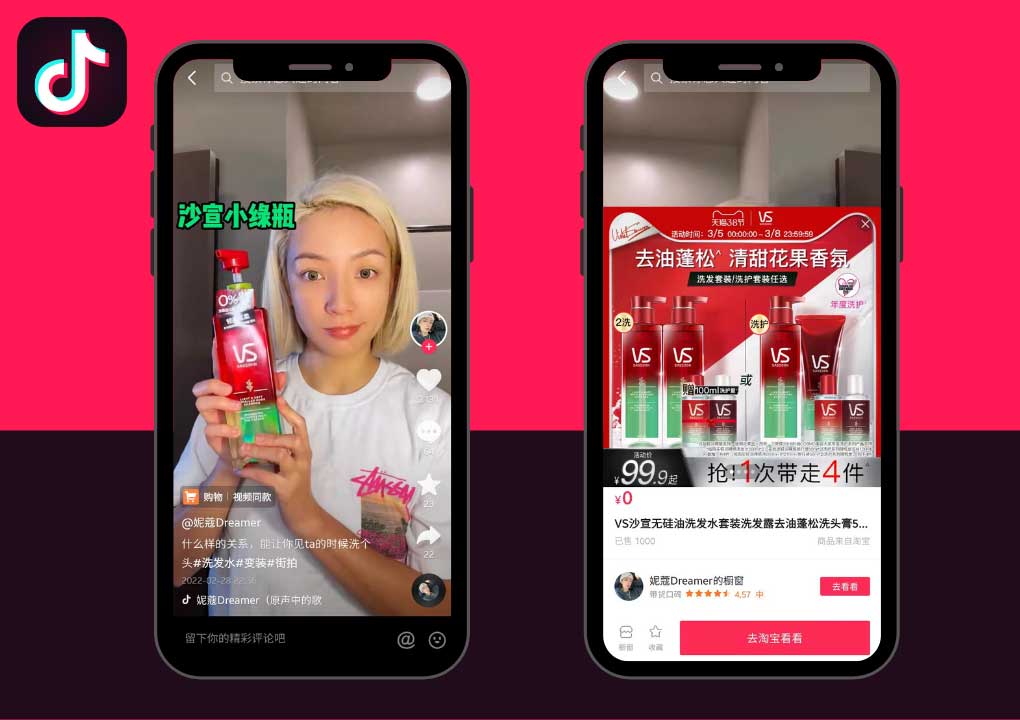
Start selling your beauty products in China!
Cosmetics market in China is booming and as Chinese people trust foreign cosmetics brands more than their own, there is a big potential for international companies in this sector. But there is a lot of aspects to take care of, from import regulations, distribution, sales channels, understanding Chinese people’s shopping behaviours, Chinese social media and many more. As it’s all complicated, it’s best to work with a marketing agency that will walk you through all the steps of starting your business in China.
We are a China marketing agency with both Chinese and foreign professionals that have expertise in introducing many foreign companies from different sectors in China. We can help you with your market entry and marketing strategy, we can find the right distributors for your cosmetics brand, advise you on all beauty events and many more. Here are some of our case studies;
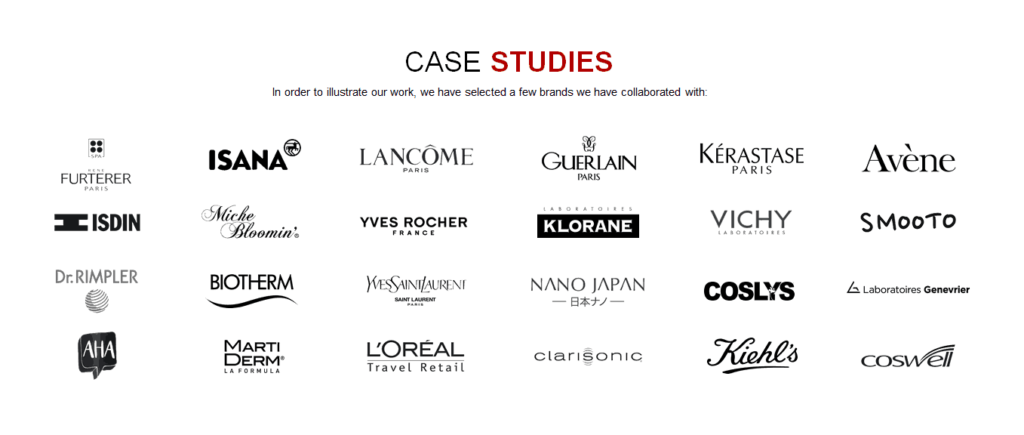
Don’t hesitate and leave us a comment or contact us to discuss your ideas!

